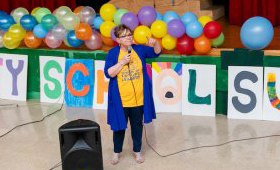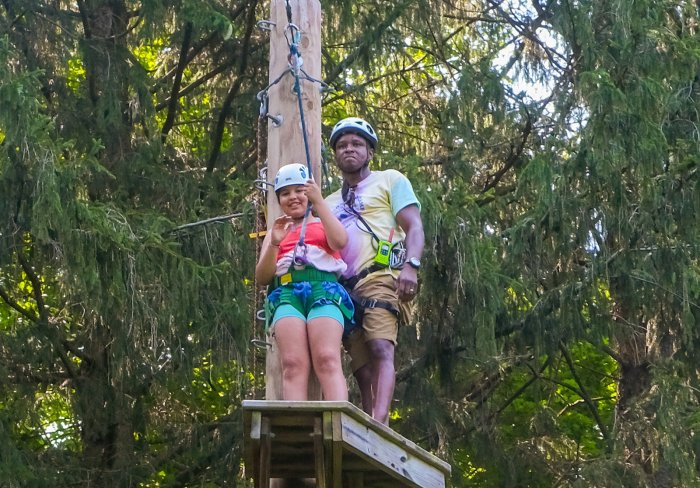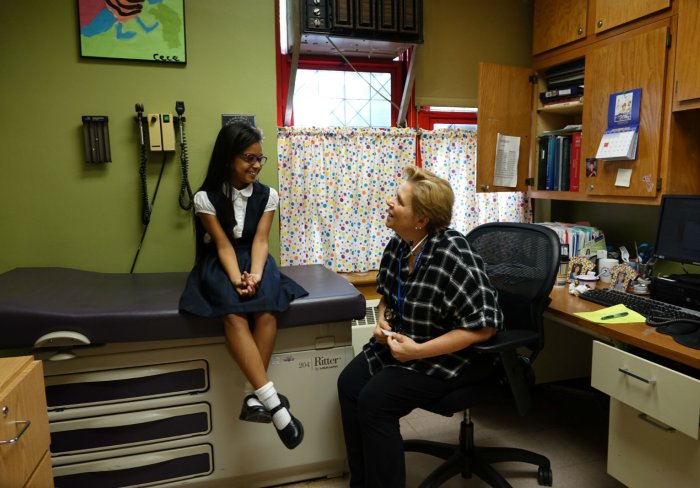Jalissa Vargas, a nurse and health educator, works in a bustling high school that serves 3,000 students on Staten Island.
Dozens of students walk into the health center at Curtis High School every day, where Jessica conducts physicals and provides reproductive services. On March 16, the high school and health center closed, leaving teens without a place to pick up prescriptions and receive critical medical advice.
Jalissa and her colleagues worked quickly to ramp up telehealth services, calling and texting the students they usually see in person. In addition to informing them about these services, Jalissa had to consider their privacy.
“We also have some students that have private insurance so e-prescribing any medication could potentially be an issue for them for confidentiality reasons,” she said.
To sidestep any issues, Jalissa collaborated with the Children’s Aid Goodhue Community Center, to turn it into a de facto health center. Students can pick up contraception and receive other services that are usually provided at Curtis High School.
She also had to navigate another issue. Bus service on Staten Island had been cut due to the pandemic, so getting to the Goodhue Community Center was impossible for some students. So Jalissa has been traveling to the St. George Ferry Terminal to personally hand out prescriptions to students.
“We’ve been trying to accommodate our kids as much as possible in the safest way possible during the pandemic,” Jalissa said. “Meeting up with the kids and being able to give them a service that they otherwise wouldn’t be able to get during this crisis – that was really a highlight for us.”
Unlike other boroughs, Staten Island youth have limited options for these services. Students have expressed feeling uncomfortable going to clinics run by providers other than Children’s Aid, Julissa said.
“In Staten Island, there are not many options available to them,” she said. “This experience has taught us that there are different ways to do things. Instead of simply waiting for the kids to come to the clinic [we’re] thinking about different ways we can outreach.”







